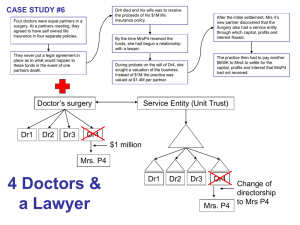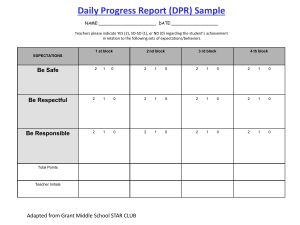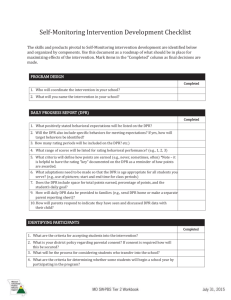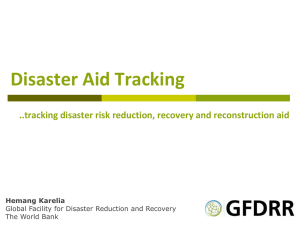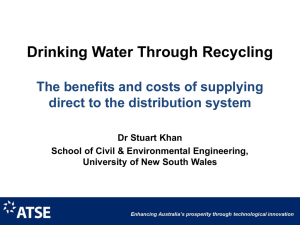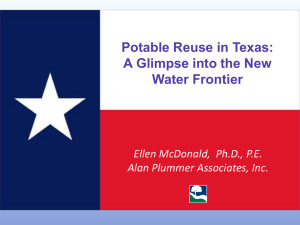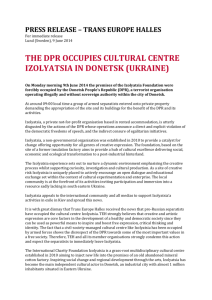Management of Statutory Overlaps in Environmental Regulation
advertisement
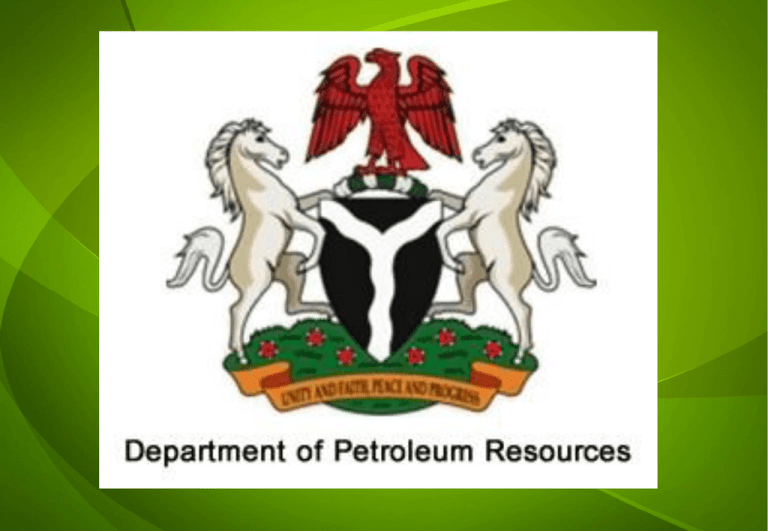
MANAGEMENT OF STATUTORY OVERLAPS ON ENVIRONMENTAL REGULATIONS IN THE NIGERIAN OIL & GAS INDUSTRY Dr. Musa M Zagi, SPE, Mei DEPARTMENT OF PETROLEUM RESOURCES LAGOS, NIGERIA PRESENTED AT THE 15TH HSE INTERNATIONAL BIENNIAL CONFERENCE ON OIL AND GAS, ABUJA-NIGERIA NOVEMBER 5-7, 2012 PRESENTATION OUTLINE FRAMEWORK FOR ENVIRONMENTAL REGULATION DPR ENVIRONMENTAL LEGAL REGULATORY FRAMEWORK MULTIPLE REGULATORS FOR ENVIRONMENTAL MANAGEMENT CURRENT AREAS OF CONFLICT POTENTIAL AREAS OF CONFLICT WAY FORWARD CONCLUSION 3 FRAMEWORK FOR ENVIRONMENTAL REGULATION ARMS AND LEVELS OF GOVERNMENT THE CONSTITUTION FEDERAL 80 legislative items (68+12) Oil as item 39 on the exclusive STATE legislative list LOCAL Executive Environment not listed in either of the list, implying that it is on the residual list with each arm of Judiciary Legislature Government having legislative right hence the multiplicity of regulators 4 DPR ENV. LEGAL/ REGULATORY FRAMEWORK Petroleum Act, 1969; Section 9 (1)(b)(iii) Associated Gas Reinjection Decree 99, 1979 and its amendments Oil Terminal Dues Act, 1969 Mineral Oils (safety) Regulations, 1997; section 21 Petroleum (D&P) Regulations, 1969; sections 21-25 Petroleum Refining Regulations, 1974; sections 27, 35, 38 & 43 The Oil and Gas Pipelines Regulations, 1995 Environmental Guidelines & Standards for the Petroleum Industry, 2002 5 MULTIPLE REGULATORS FOR ENVIRONMENTAL MANAGEMENT THE ORGANIZATIONS KEY AREAS OF CONFLICT The FMEnv Current Areas NOSDRA Oil spill response management DPR Environmental Impact Assessment NEMA NIMASA NDDC SEPAs Potential Areas Drilling & production waste management Gas flaring and leakage management compensations and fines Decommissioning and abandonment The focus of my paper will be on Pipelines/facilities integrity monitoring FMEnv, NOSDRA and DPR Abrogation of DPR’s laws 6 ENVIRONMENTAL IMPACT ASSESSMENT (FMEnv / DPR) The Environmental Impact Assessment Processes for DPR & FMEnv are similar in content upto 2002 with the following major differences that arose when a revised EGASPIN was issued – ‘During’ not ‘before’ or ‘after’ – Integration of EIA with project concept selection, project engineering design, construction, operation and decommissioning with attendant opportunities for design mitigation and impact elimination (BOEM). – A CTR-based Environmental Management Plan (EMP) – Extensiveness vs Intensiveness – Consolidation vs Fragmentation Preparing EIA reports to satisfy both requirements is difficult with impacts on cost, time, resources and project schedules 7 OIL SPILL RESPONSE MANAGEMENT (NOSDRA/DPR) Oil Spill Management evolved through a tiered response approach. NOSDRA originally conceived to cater for disastrous spills i.e. 3rd tier (section 5 of the Act), but now responsible for managing all tiers (section 1 of the Act) NOSCP though formulated, is yet to be established. Multiple JIVs and OSCP activation Increase in CTR and risks associated with frequent exposure of personnel to areas with security concern. Efforts underway to amend NOSDRA enabling act to include dealing with Gas flaring, E&P Wastes, pipelines integrity, decommissioning and abandonment etc. 8 OIL SPILL RESPONSE MANAGEMENT (NOSDRA/DPR) Cont’d On a proximodistal axis of our HSE schedules, OSR is at the distal end At the proximal side of the axis our focus is to design out oil spill incidents by – Restricting number of connectors, hinges and valves on high pressure hydrocarbon lines. – Robust pipeline and vessel hydro-testing procedures – drainage systems underneath HC separators. – Optimal pipeline/flowline routing to avoid high risk areas. – Preventive maintenance programs of critical facilities – Emplacement of hydrocarbon leak detection systems on pipelines and export pumps 9 POTENTIAL AREAS OF CONFLICT NOSDRA’s Act 2006 is currently being amended by the NA with the following amendments amongst others prevention, detection and general management of oil spills, oily wastes, gas leakages and response and gas flaring remediation and compensation ensuring subscription of operators to CNA or similar bodies increasing penalty for failure to report oil spillage from N500K to N5M a penalty of N50M or 2 years imprisonment or both for failing to clean-up within 2 weeks of the spill Monitoring decommissioning and abandonment for drill sites and other oil facilities Funding of the agency ( 2.5% EF, 0.5% IOC/LOC’s operational fund and 10 cents/bbls) Repealing/ overriding/voiding of existing laws relating to oil, oily wastes pollution management and gas leakages in the petroleum sector 10 WAY FORWARD WHAT OPTIONS ARE AVAILABLE FOR TACKLING THE PROBLEM? OPTION 1 :Maintain the status quo with its corresponding consequences OPTION 2: Transfer the environmental functions of DPR to FMEnv and its Agencies OPTION 3: Retain the environmental functions in the oil and gas industry with the DPR OPTION 4: Tackling the root causes of the problem 11 WAY FORWARD OPTION 1: Maintain the status quo Not the way to go because of: The attendant unwieldiness associated with duplication of efforts. Different process and schedule for same activity Wastage of Considerable resources to achieve same/similar goals Project delays in a schedule-driven industry surreptitiousness on the part of operators It decreases accruable revenue to government 12 WAY FORWARD OPTION 2: Transfer DPR Environmental Functions to FMEnv Already attempted in 1999 and reversed. A possible option but one that is unconventional, unnecessary, and costly for the following reasons: Enforcing sustainable development in oil & gas projects will be hampered as there will be - no Integration of social, economic and environmental factors in project decision making thus tempering with the proximodistal axis of our activities -total disequilibrium between productivity and environmental protection DPR predating FEPA & FMEnv not an anomaly FMEnv does not have the capacity and enforcement instrument (license or permit for oil and gas operations). Sectoral enforcement is most effective Current approach to oil & gas industry regulation is a one-stop-shop approach to avoid predication of Petroleum Minister’s time-bound activities on the activities of another Minister 13 WAY FORWARD OPTION 3 Retain the Environmental Functions in the Oil and Gas Industry with the DPR. Strengthen the DPR with adequate resources for Optimal HSE Performance as done to MMS post- Macondo (BOEMRE, BOEM, BSEE) Revisit and establish MOUs between DPR (MOU enablers) and FMEnv/NOSDRA/NIMASA with clear demarcations, delineation and/ or delegation of responsibilities as done internationally (USEPA) Previous efforts in the past were encumbered. (MOU) This is in line with global practice of a one-stop-shop concept in oil and gas industry operations 14 WAY FORWARD OPTION 4: TACKLING THE ROOT CAUSES OF THE PROBLEM Arbitrariness of legislative process -TOR Vs Scope - Power of lobby -Extant laws -Alliance with MDAs (H/U/E) Executive fiat that create MDAs before defining (and enacting by NA) policies and elements Self serving bureaucracy - The ??? is can we hold unto our views/proposals head or tail of the coin?. If not, then our views/proposals are selfish and unpatriotic 15 CONCLUSION Multiple environmental regulations/regulators exist in the oil and gas operations with its associated negative effects on standards, safety and CTR There is a need for a one-stop-shop approach with one agency that could provide definitive answers to regulatory questions and that agency should be able to enforce environmental compliance The FME should issue, upgrade and/or adopt standards and allow for sectoral enforcement The short term solution is for FME and its agencies to establish MOUs with other Federal, State and Local Government agencies with a clear demarcations of roles and responsibilities as enshrined in the statutes of the FME/NOSDRA The long term solution is through legislative amendments of conflicting laws We all have a role to play: - the executive, the legislature and the bureaucrats Are we ready to make history by playing our respective roles? 16 THANKS FOR LISTENING 17
